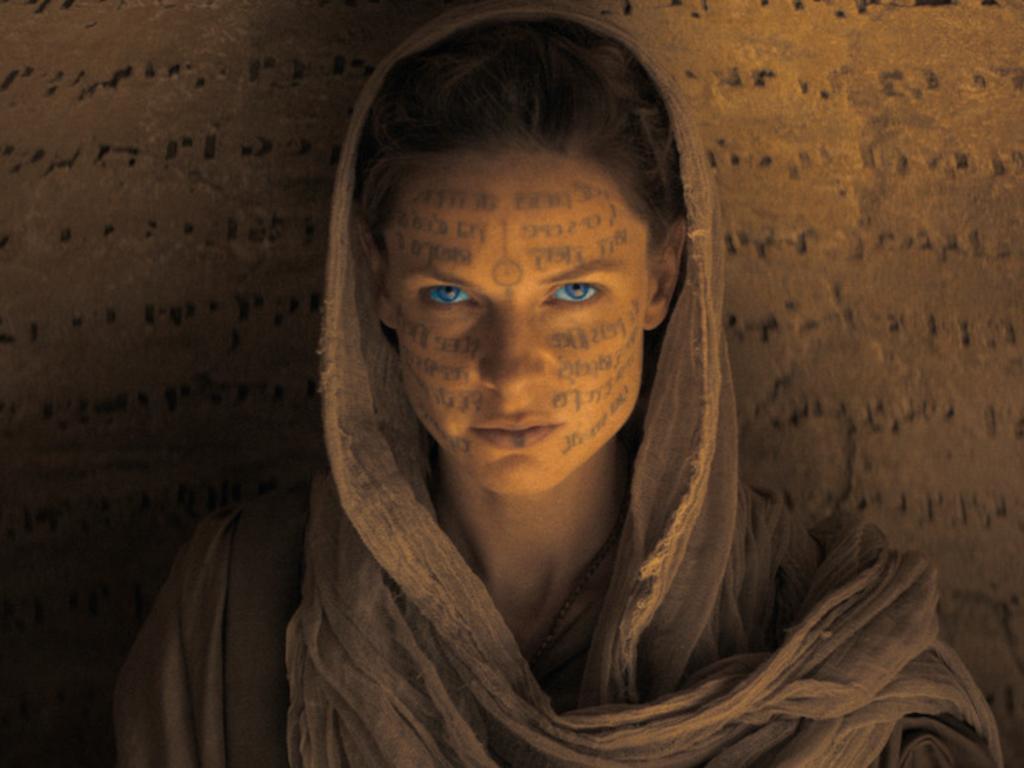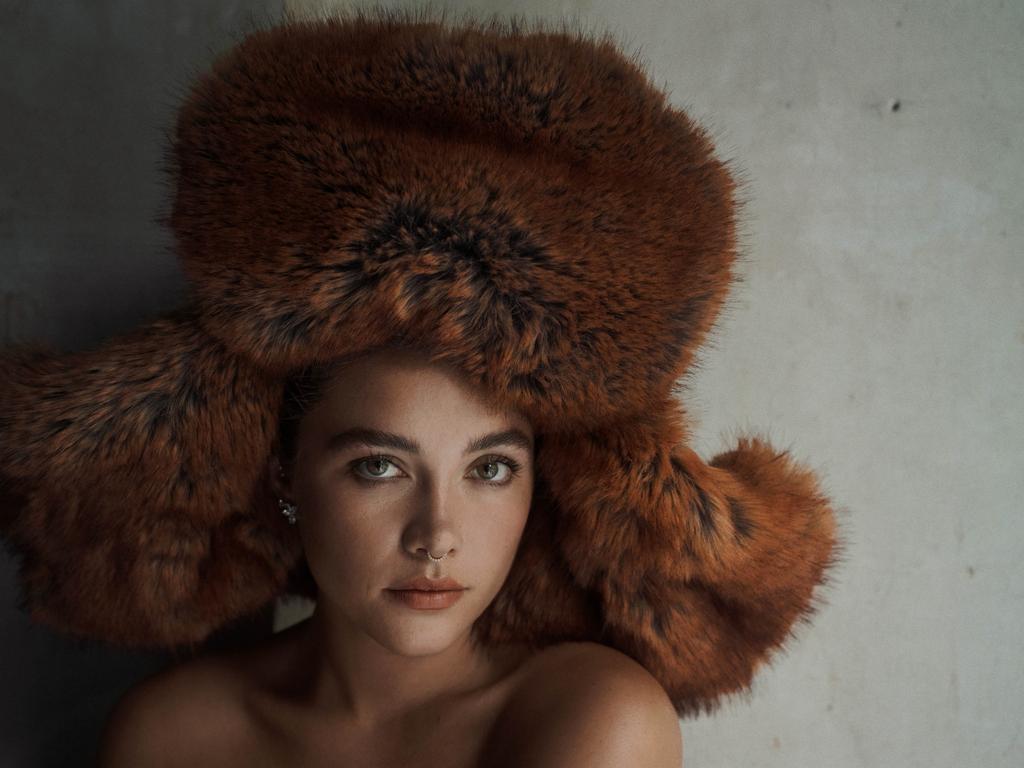Zendaya and Florence Pugh know Dune is a big deal
With the second film of Frank Herbert’s classic series ready to storm theatres, its stars sing the praises of their director and stylish slingbacks.
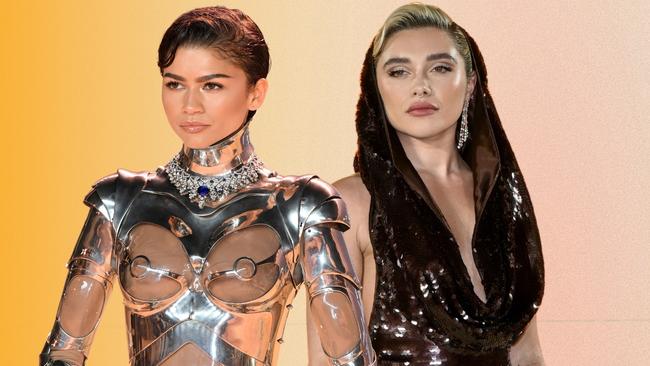
They may not show it, immaculately clad in designer couture and perched comfortably on stools in Beverly Hills’ plush Four Seasons Hotel, but actors Zendaya and Florence Pugh are feeling the weight of the world. Sci-fi fans are an obsessive bunch, and as two of the stars of the upcoming Dune Part 2 — the sequel to the multiple-Oscar winning 2021 film adaptation of Frank Herbert’s books — they understand the importance of getting it right.
“I know how much this book means to people,” says Zendaya, 27. “I have had so many random encounters with people who grew up with the books; it’s very close to their heart and they are excited about seeing it come to life.”
The actor, shifting in an angular grey dress from Andreas Kronthaler’s spring-summer collection for Vivienne Westwood, says fans of the franchise are in no safer hands than those of director Denis Villeneuve. “He is a fellow fan,” she says of the French Canadian filmmaker. “He loves the material more than anyone.”
Zendaya’s castmate Pugh, the Oscar-nominated English actor best known for her role in Little Women, agrees. “The world has finally been created,” she says ecstatically. “Watching the first one was (like) how is this in someone’s head? And how does it look so authentic?”
The 28-year-old Pugh, wearing a broderie prairie top in contrast to the punkish, bleached semi-mullet she’s rocking continues. “To be part of this huge noise of a movie I feel very proud. I feel very lucky. And I feel very grateful that we get to do this and talk about how amazing the experience was. It’s quite rare to be able to say how grateful you are.”
Review is in Los Angeles to meet the two stars of Villeneuve’s space opera epic, released in Australia on February 29. The entire floor has been booked out for a press junket.
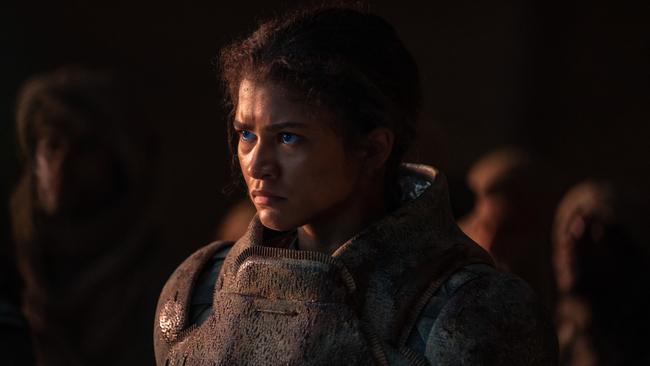
The hundred or so people running the show are clomping up and down the corridors, feverishly whispering directives into their walkie-talkies. When Review walks into the room where the interview is to take place, both stars are swarmed by their stylists and makeup artists, making imperceptible touch-ups.
We are here for a good time, but not a long time.
Waiting for the glam squad to clear off, we politely stare at each other. Partly to punctuate the silence, but also because it’s impossible to resist, Review tells them how good they both look. This, unintentionally, sets off a chain of compliments. “I love your shoes,” Pugh says, looking down at this writer’s feet. “But I don’t think I could pull them off.”
Our interview time has started but we’re deep into an intense discussion about whether or not Zendaya and Pugh are Tabi Girls, a reference to Review’s Maison Margiela Tabi Slingbacks — a style that went viral recently after a pair was stolen from a woman on a Tinder date.
It’s a brilliant moment of sisterly bonding, but not ideal when it becomes apparent a fifth of the allocated time has been chewed up without having asked a single Dune-related question. The woman working behind the camera gently reminds us of the task at hand, but by this point, two of the world’s biggest stars and a journalist from Sydney are all giggling.
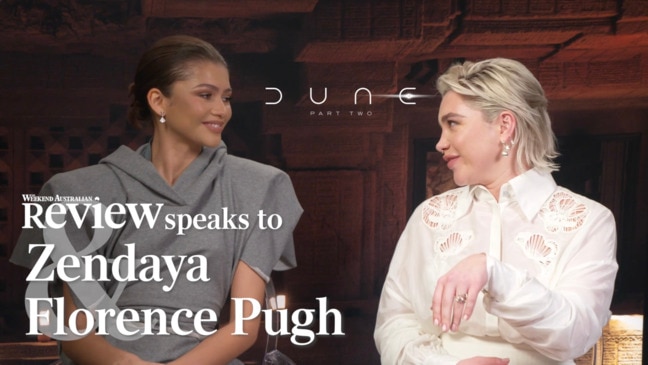
Zendaya plays Chani, a fearless member of the Fremen, who are the tribal people of the planet Arrakis, aka, Dune. It is this pitiless desert planet — which harbours both the precious resource “spice” and gargantuan, killer sandworms — that the noble House Atreides assume control of from the evil House Harkonnen, in a political manoeuvre orchestrated by The Emperor.
In the first film, which won six Oscars, Chani is briefly introduced as a woman seductively haunting the visions of the story’s reluctant hero, Paul Atreides (Timothee Chalamet). For most of the near three-hour film, she appears in dreamlike slithers, hinting at the mystery of Paul’s destiny. Part 2 is very much, as director Villeneuve will later tell Review, Chani’s movie, who, it transpires, is Paul’s true love interest.
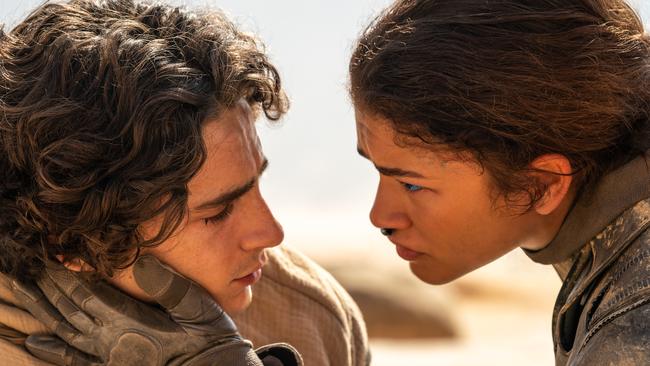
For Zendaya, the American actor whose full name is Zendaya Maree Stoermer Coleman, the greatest challenge she faced embodying Chani was “the technical stuff”. She had to become fluent in Chakobsa, the fictional language of the Fremen people as developed by David J. Peterson, who invented the Dothraki tongue for Game of Thrones. But it was learning to move in the Fremen “stillsuit,” which, in the film, recycles body waste into drinkable water, and in real life, was made of monstrous layers of netting, cotton, wicking fabrics, and silk, that proved most difficult. “It’s like, my arms can’t do this!” she says, long limbs gesticulating wildly. “How am I going to do that?”.
Dune was filmed in the deserts of Jordan and the United Arab Emirates, where temperatures reached as high as 48C. Zendaya developed severe body acne from sweat trapped in the stillsuit.
Pugh had a more glamorous ride; she plays Princess Irulan, the steely eyed daughter of Christopher Walken’s Emperor. “I wasn’t as tortured,” Pugh says before eyeing Zendaya: “Sorry babe!” There were no stillsuits for the Englishwoman, just a lot of ornate chain mail headwear.
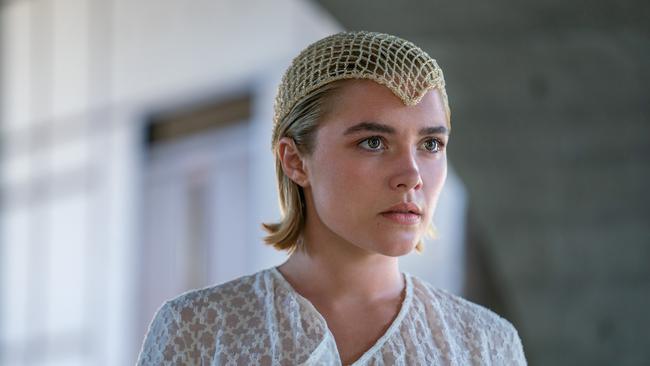
Describing “the honour” of stepping into the world of Dune, Pugh says. “Every day you have the feeling that, ‘Wow, I’m really here, and I get to be around all these talented people.’
“You’re looking around the room of actors and there’s everyone that you have ever admired.” She had to constantly remind herself to slow down and take it all in, she says. “It’s a big movie, a big story, don’t waste it.”
The gravitas of adapting Herbert’s novel for film was not lost on Zendaya and Pugh. It’s been done before by David Lynch — the mastermind behind Twin Peaks — in 1984. He famously hated the movie so much he requested to have his name removed from the credits, writing in his memoir Room To Dream that it was “a humiliating major failure”. There was also an ambitious attempt by Chilean surrealist director Alejandro Jodorowsky to create a 10-hour adaptation, featuring the likes of Orson Welles, Salvador Dali, and Mick Jagger, as documented in the 2013 film Jodorowsky’s Dune.
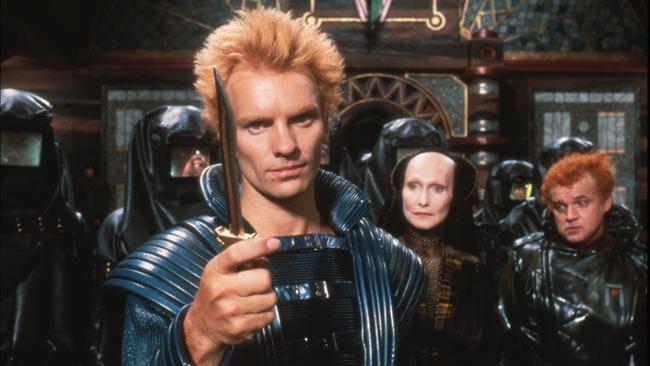
For many Dune fans, however, the latest is the adaptation they have been waiting for.
The films represent the project of a lifetime for 56-year-old Villeneuve. He first came across the book as a teenager, at a library near his school in Trois-Rivieres, Quebec. He remembers that at the time, he was deciding whether he wanted to be a filmmaker or a biologist, and found himself “really touched,” by the way Herbert wrote about the ecosystem.
Villeneuve says the novel, a sweeping eco-fiction and parable of the oil economy, has only become more prescient with each passing year.
“The danger of blending religion and politics, and the impact of the change of climate — it is a book that has become, sadly, more relevant.”
A decade ago, when Villeneuve first came to Los Angeles to work on his debut English-language film, the Hugh Jackman thriller Prisoners, he recalls that people would always ask him what his dream project would be. “The only thing that was popping in my mind was Dune,” he says in his gentle Quebecois accent. “It is a book that I cherish, that I love, since maybe 13 or 14 years old.”
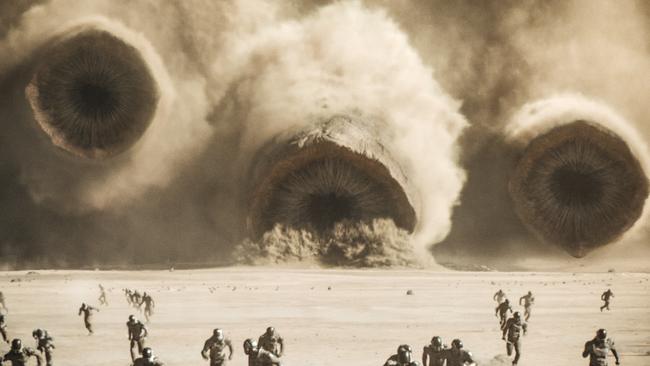
Growing up, Villeneuve and his friends did not have any filmmaking equipment, so they would sit down and storyboard together “about the movie we would like to make”. It was this storyboarding process that would prove “fundamental” in the imagining of Dune. “It is the last place where dreams can still exist,” he says, explaining that he asked his artists not to look to the internet for inspiration, “but try to have images coming out of the subconscious”.
Sci-fi is familiar terrain for Villeneuve, who directed the 2016 film Arrival, in which Amy Adams plays a linguist learning to communicate with visiting aliens, and the 2017 spectacle Blade Runner 2049. But, he explains, he was obsessed with making Dune feel rooted in a recognisably human world. This meant forgoing visual effects mirages in favour of complicated, expensive — the combined budget for both films was $US287 million — sets on location.
Perhaps the most crucial figure in bringing Villeneuve’s vision to life was the Australian cinematographer Greig Fraser, who the director describes as an artist of “pure poetry”, and was convinced he was the right man for the job after watching Kathryn Bigelow’s 2012 war drama Zero Dark Thirty.
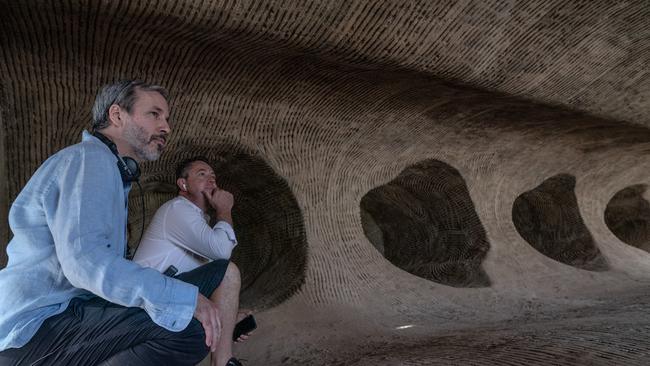
“He is a tremendous artist, but he’s also a kind of athlete. I needed someone that would be willing to push the medium and be willing to work in very difficult conditions,” Villeneuve says.
He says Fraser is like a brother to him. “Someone that I feel I can be completely myself (around), and who can deal with my neurosis.” He observes a weird connection he feels exists between French Canadians and Australians. “There’s a very mutual, easy bond that I find with artists from Australia. I don’t know what it is…” he trails off. “Love of beer, maybe.”
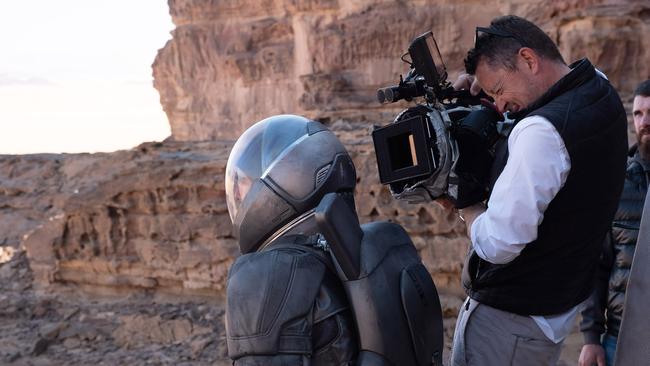
In 1990, when Villeneuve was studying film at the University of Quebec in Montreal, he competed in — and won — the filmmaking reality competition, La Course Destination Monde, which aired on the national broadcaster.
The show saw eight aspiring filmmakers sent across the world to make documentary shorts. In one of Villeneuve’s films, he explored the relationship of the filmmaker and his subject, through filming beetles in the desert. Beetles, and insects in general, make up the world of Dune — be it the “crawlers” responsible for harvesting spice, the “thopters” which resemble brutalist dragonflies, or the Harkonnen army uniforms, with helmets and costumes designed by Villeneuve and costume designer Jacqueline West to emulate bulbous ant heads.
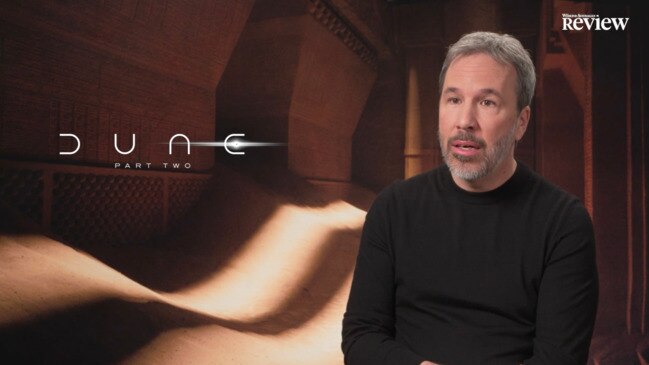
“The whole world is inspired by insects,” Villeneuve says. “There’s something about insect design that I’m seduced by. They are sophisticated beings that will probably, sadly, survive us.”
When asked whether this compulsion to revisit insect imagery is something that imprinted on him from his early days as a filmmaker, he concedes, “Yes.”
“But the meaning of it, I like to let it go. If you try too much self-analysis, sometimes the answers are boring,” he says.
Villeneuve clearly values the talent of those around him, and with the time coming to an end with Zendaya and Pugh, Review takes the opportunity to bring up a quote the director gave to Time Magazine: “Florence and Zendaya will be the new power in Hollywood … These strong, charismatic figures will drag people back to the theatre.”
On hearing this praise, Pugh starts laughing: “It kind of sounds like we’re dating,” she says, extending out her hand like a marriage proposal.
“It’s a real honour having a director who sings your praises as much as you sing theirs. I think that’s what’s been so wonderful about all our relationships,” says Pugh.
“We can’t stop talking about how amazing Denis is on set, and neither can the crew.”
Zendaya agrees, adding there was no special treatment for the actors, and that “everybody was treated with the same respect for their work and their craft”.
“I think that’s what’s important — that everybody feels taken care of and appreciated in their work, and that every job is important to the filmmaking process.”
Dune 2 is open nationally on February 29.
Geordie Gray travelled to Los Angeles with the assistance of Universal Pictures.


